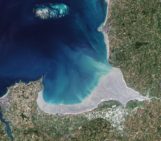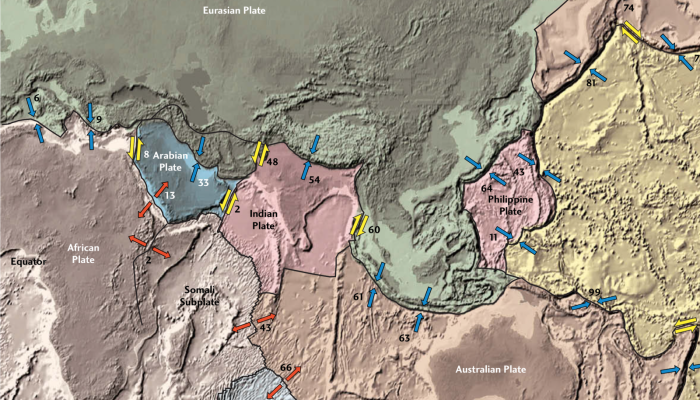
These blogposts present interviews with outstanding scientists that bloomed and shape the theory that revolutionised Earth Sciences — Plate Tectonics. Get to know them, learn from their experience, discover the pieces of advice they share and find out where the newest challenges lie!
Meeting Richard Gordon
Prof. Richard Gordon is currently Professor at Rice University (William Marsh Rice University in Houston, Texas). He researches on how several areas such as paleomagnetism, plate tectonics, lithospheric deformation and space geodesy are tied together. While a student, Professor Gordon used paleomagnetic data to calculate the minimum velocity of a plate or continent in the past. In 2002, he was awarded by the GSA with the Arthur L. Day Medal for contributions to the development of the plate tectonic model, especially for the recognition and quantification of diffuse oceanic plate boundaries.
There will be some heated debates in the AGU
After being active for several decades in this field, where lies currently your main research interest?
My interest is in processes in the lithosphere. This could mean Plate Tectonics, deformation of the lithosphere, absolute plate motions, how plates move relative to the hotspots, how much hotspots move between them and how they all move relative to the spin axis. Plate motions, how standard they are, how motions from a million years compare with plates motions we see over decades with space geodesy. My particular interest right now lies in working out the polar wander path of the Pacific plate, because it is a key missing part of the puzzle for understanding Cenozoic global tectonics, and Pacific tectonics. Those are some of the highlights.
How would you describe your approach, which methods do you while conducting your research?
A lot of it involves looking at data, using as many data and as diverse datasets as we can to test different hypotheses. A little tiny bit of it involves modelling. The main focus in our research group right now is on looking at marine magnetic anomalies in the Pacific and coming up with novel ways of process them in order to squeeze out information on where the paleomagnetic pole lies.
What would you say is the favourite aspect of your research?
When you discover something new about the Earth and understand the Earth better, and you are the first one to get that realization: that is such a high, that makes all the hard work worthwhile.
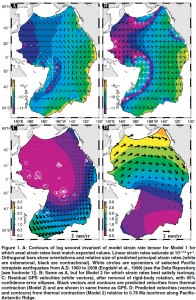
Kreemer and Gordon (2014). Pacific plate deformation from horizontal thermal contraction. Geology, 42 (10), 847-850.
Why do you think is your research relevant? What are the possible real world applications?
A lot of the work I’ve done has been about relative motion of the plates and motion across deep deforming zones, for example in the western US. Some of that work has been used and can be used more to help assess seismic hazards. The seismic moment releases energy over time and spaces related to how much the earthquakes move and how fast the plates move, I think this is a very important implication. I’m hoping, in the future, to relate true polar wander to global climate change. Maybe it will work, maybe not. But if it did, I think that would be really relevant.
What do you consider to be your biggest academic achievement?
(sighs)… That’s a tough one… Something I am very proud at was leading a group with a couple of my graduate students, to put together one new global set of plate velocities. We did a really careful job, went back to all of original data and analyzed the results. We were able to discover a lot of things. You can discover a lot of new things by going back and looking at the data. It was a big project and we were all really worn out at the end, but I think we are all very proud of that.
That work led to the discovery and quantification of motion across several diffuse oceanic plate boundaries. Such boundaries are globally significant and occupy 10% to 15% of the ocean floor. At the scale of the boundaries and boundary zones, the physics of deformation in them is very different from that for narrow oceanic plate boundaries.
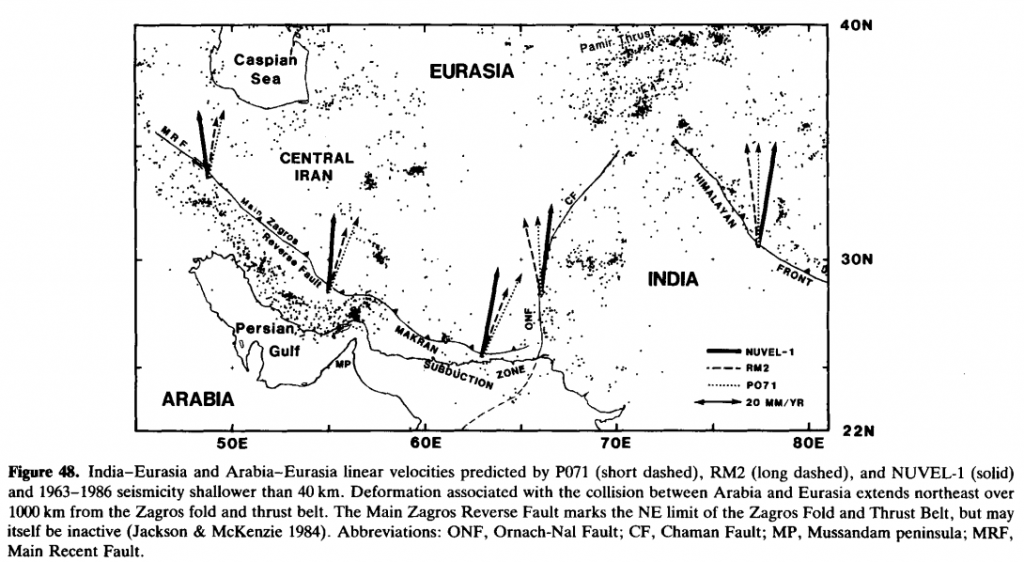
C. DeMets, R. G. Gordon, D. F. Argus, S. Stein (1990). Current plate motions. Geophysical Journal International, 101 (2), 425–478
What would you say is the main problem that you solved during your most recent project?
We have some of the papers out and still some of them are in the pipeline, I will be talking about them in the AGU: We solved a problem that people didn’t think was a problem: what’s the paleolatitude of the Hawaiian hot spot, when the Emperor Seamount Chain was formed. What we showed is different from what everybody believed. We showed that it stayed in the same place, it did not change its latitude. So it is going to be very controversial and there may be some heated debates in the AGU and EGU, I am sure. But I am sure we have got this right!
After being many years active in the academia, looking back, what would you change to improve how science in your field is done?
The easy answer would be: more funding! (laughs) Also, more opportunities for young scientists.
What are the biggest challenges right now in your field?
For the project I am doing right now on paleomagnetism of the Pacific, one challenge is that we need more data from the Pacific. We can do better with more data. A lot of the data that we have is collected by ships. But we would like to have vector data, from airplanes or drones that can move fast enough. Finding better quality data than we have is a challenge. And this goes back to more funding (laughs).
I thought I was going to be a writer

Richard Gordon in 1971. Credit – East Side Union High School.
What were your motivating grounds, starting as an Early Career Student? Did you always see yourself staying in academia?
When I went to graduate school, I thought I was going to be a writer. A science writer, maybe a science-fiction writer too. Isaac Asimov was my role model! I thought I had to have a PhD to know enough to be a good science writer. But to do a PhD I had to do research. So I started doing it and got really excited about it. And I thought “Hey, I could do this! I’m pretty good at this!”
I did an internship in the oil industry for a summer and I really liked that too, but I liked academics a lot more, so I made the decision to stay in academia. Although I am still keeping my options open to still become a science writer. Isaac Asimov actually was an assistant professor for I think 6 years. When he reached the point where he was earning more money from his writing than as a professor, he decided to become a full-time writer. But I never did the writing, I just got so excited about academia that I have been totally focused in that way.
A disproportionate number of new discoveries are made by early career scientists
What advice would like to you give to Early Career Scientists?
The first thing is: don’t get discouraged. Because part of being an academic is receiving critical feedback. The advantage for us is that the people who are giving us feedback are people who also are getting feedback from somebody else. Whereas in art & music, the critics don’t actually make the music or make the art, they are just professional critics. It doesn’t give them the perspective of the person who also has received critical feedback. Everyone is going to get criticism, and papers get rejected and proposals get rejected…just don´t let yourself get discouraged and do read the criticisms carefully. It may be mostly wrong but there will be a kernel of truth, which can help you write a better paper, write a better proposal or be a better scientist.
The other thing to remember is that a disproportionate number of new discoveries are made by early career scientist. The early career scientists own the future, the near future. And that is part of “don’t be discouraged” because if you’ve got bright ideas, you could be just around the corner of a big advance.
Those two things together are, I think, important.
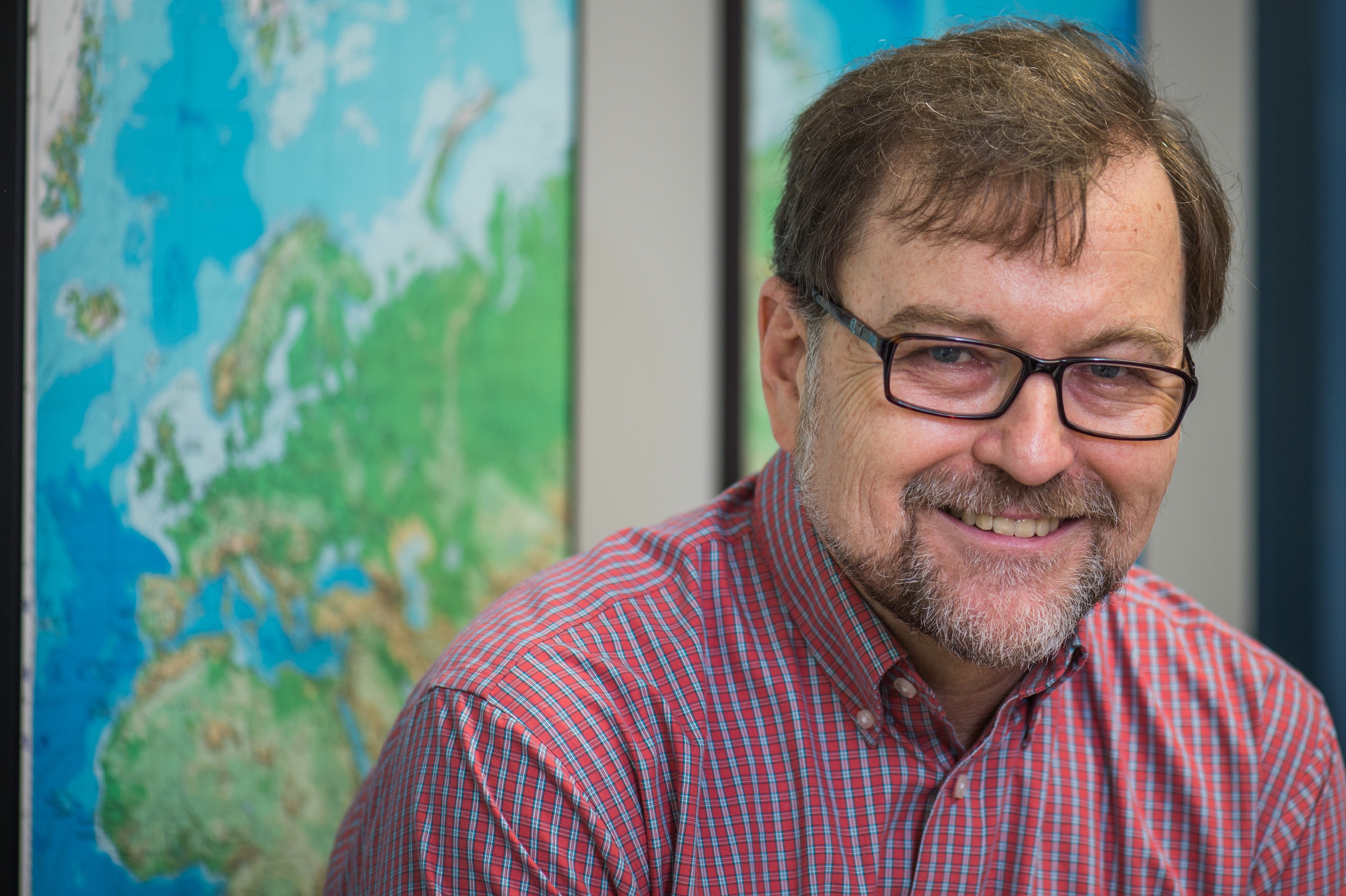
Richard Gordon. Credit – Jeff Fitlow, Rice University.
Interview conducted by David Fernández-Blanco


